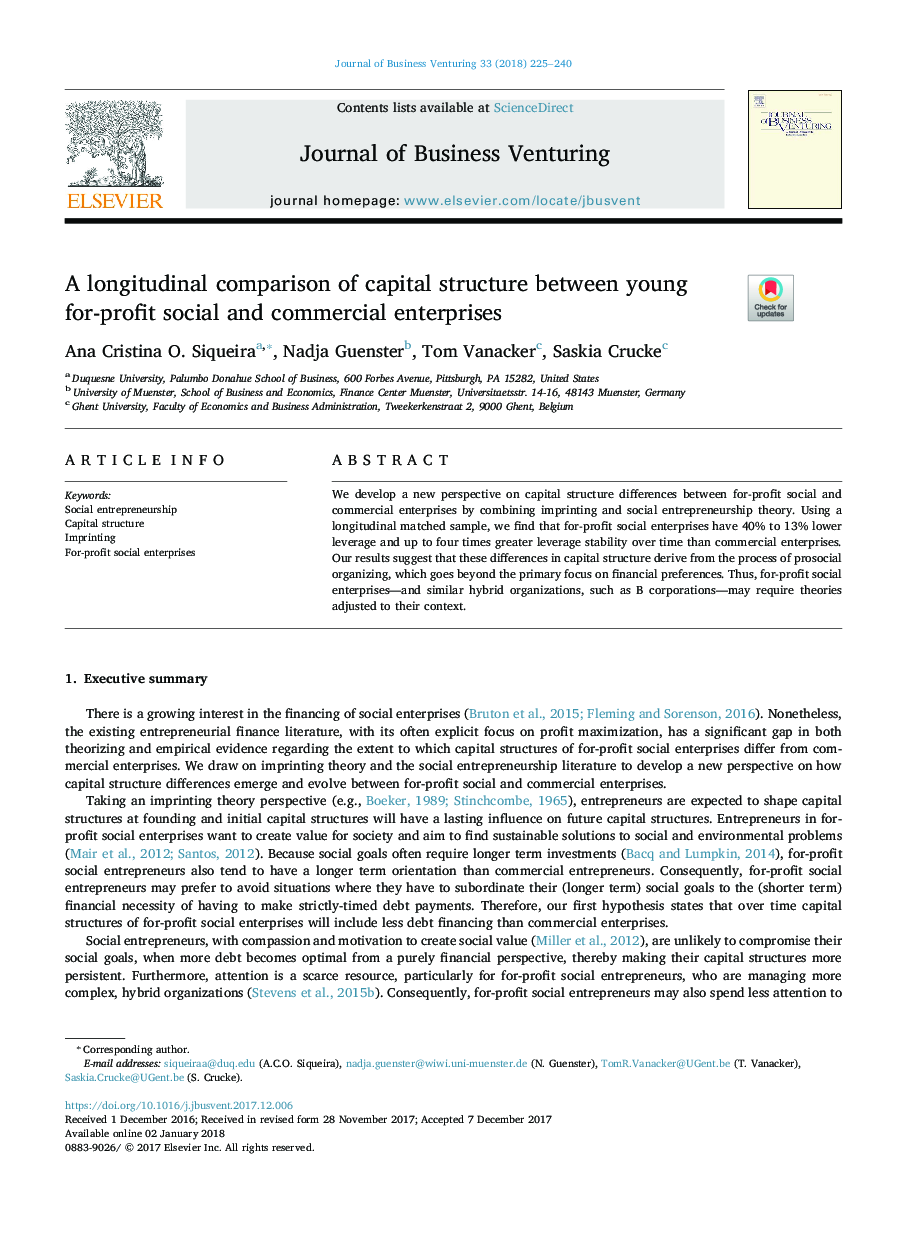| Article ID | Journal | Published Year | Pages | File Type |
|---|---|---|---|---|
| 7425782 | Journal of Business Venturing | 2018 | 16 Pages |
Abstract
We develop a new perspective on capital structure differences between for-profit social and commercial enterprises by combining imprinting and social entrepreneurship theory. Using a longitudinal matched sample, we find that for-profit social enterprises have 40% to 13% lower leverage and up to four times greater leverage stability over time than commercial enterprises. Our results suggest that these differences in capital structure derive from the process of prosocial organizing, which goes beyond the primary focus on financial preferences. Thus, for-profit social enterprises-and similar hybrid organizations, such as B corporations-may require theories adjusted to their context.
Related Topics
Social Sciences and Humanities
Business, Management and Accounting
Business and International Management
Authors
Ana Cristina O. Siqueira, Nadja Guenster, Tom Vanacker, Saskia Crucke,
